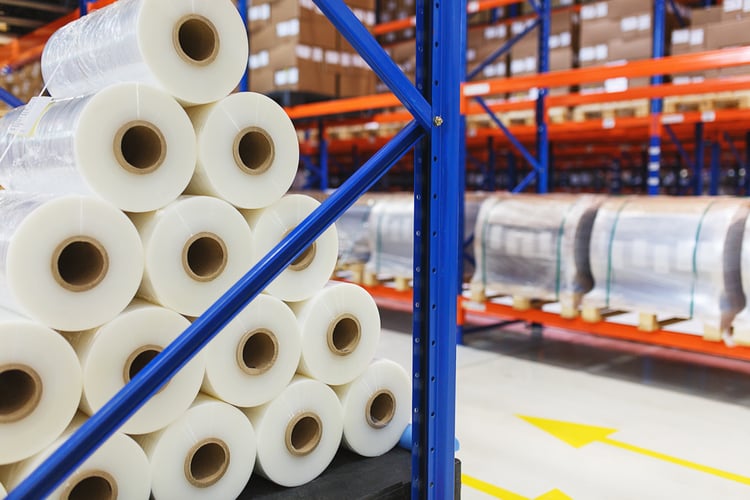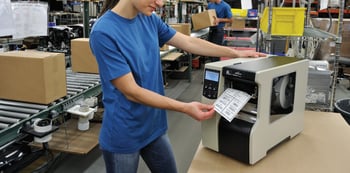
Global supply chain operations rely heavily on the synchronicity of key participants to make sure demands are met as efficiently as possible. But product packaging is the one element that directly impacts each part of the logistical process, making it essential.
Product packaging is much more than just placing products in a cardboard box for shipment or storage. It impacts everything from distribution to warehousing to the customer experience to overall business results. Here is why packaging is so critical and how the supply chain crisis has impacted it.
Why Product Packaging is a Vital Part of the Supply Chain
If your business doesn’t believe packaging is that important, think again. Here are some of the ways packaging affects the supply chain:
1. Good Packaging Mitigates Damaged Item Returns
 Roughly 34 percent of product returns are due to product damage. And Amcor reports that the average retailer loses 4.4 percent in revenue because returned items must be discounted or can’t be resold due to packaging-related issues. As a business owner, you’ll want to choose packaging that protects your products during the shipping process and eases the stress on your reverse logistics operations.
Roughly 34 percent of product returns are due to product damage. And Amcor reports that the average retailer loses 4.4 percent in revenue because returned items must be discounted or can’t be resold due to packaging-related issues. As a business owner, you’ll want to choose packaging that protects your products during the shipping process and eases the stress on your reverse logistics operations.
2. Efficient Packaging Allows Easy Transport & Storage
How your products are packaged also impacts their ability to be efficiently transported and stored. Many items may need to pass through multiple shippers and distribution centers, so their size and shape matter. Ideally, packaging should be as compact as possible and stackable.
3. The Right Packaging Sells Your Products
More and more businesses are choosing customized packaging to appeal to their customers. Not only will customized packaging be branded, but it will give customers important information about the product. Further, organizations are increasingly choosing sustainable packaging materials, a choice of increasing importance to consumers.
How the Supply Chain Crisis Has Impacted Packaging
The current supply chain crisis has led to a shortage of just about everything, including packaging. As the supply chain continues to struggle for a sense of normalcy, here is how packaging remains impacted.
1. Lack of Supply of Packaging Materials
Since the beginning of the pandemic in 2020, when manufacturers of plastics, paper, and cardboard paused operations, there has been a struggle to regain previous production levels. In the U.S., other factors, like extreme weather conditions, have affected these efforts.
2. Rising Raw Material Costs
 The lack of supply of packaging materials is largely caused by the rising cost of raw materials, like plastics. Energy prices have skyrocketed thanks to the Russia-Ukraine conflict and other geopolitical factors. The price of raw materials, such as polyurethanes and polyethylenes, has gone up 50% year over year.
The lack of supply of packaging materials is largely caused by the rising cost of raw materials, like plastics. Energy prices have skyrocketed thanks to the Russia-Ukraine conflict and other geopolitical factors. The price of raw materials, such as polyurethanes and polyethylenes, has gone up 50% year over year.
When businesses choose to switch to alternative materials, such as cardboard, there is generally a supply and demand mismatch. When raw materials suppliers can keep up with demand, prices will soar.
3. Other Businesses Hoarding Materials
Some businesses have resorted to abandoning their just-in-time processes and overordering finished goods and raw materials. But, taken to the extreme, this excessive hoarding of materials is creating an unnecessary shortage and impacting the supply chain even further.
4. Product Logistics Constraints
Shipping issues and lack of communication throughout the supply chain are creating delays and stockouts for packaging supplies. These issues will become even more prevalent as Ecommerce adoption and popularity continues to grow.
5. Labor Shortages
Since the pandemic arrived, there have been widespread labor shortages across multiple industries. This is due to a variety of issues, such as immigration challenges, wage disputes, and safety-related concerns.
How Companies Address Ongoing Packaging Supply Chain Challenges
Supply chain challenges are complex. But every business that sells products needs quality and reliable packaging. Here are some of the ways companies are addressing these ongoing issues.
1. Connect With Agile Manufacturers
Agility refers to a manufacturer’s ability to adapt quickly to meet your business’s packaging and printing needs, whether it’s through faster turnaround times, shorter print runs, or customization. Of course, you’ll need to partner with manufacturers that have open lines of communication with their business partners to reach this level of collaboration. These business partners will have their own systems and processes in place, allowing them to get the supplies they need when they need them.
2. Localize Your Supply Chain
Many supply chains prior to the pandemic were global in nature. While you don’t need to ditch all of your overseas partnerships, it’s probably time to start looking at domestic manufacturers and suppliers for your packaging needs. Overseas suppliers might promise lower prices on the surface, but few of them can deliver the consistency and reliability necessary to remain competitive with the current supply chain challenges.
In the current environment, a shorter supply chain is a more efficient and resilient one. A single material shortage can delay your product deliveries for weeks or longer. When you work with more localized partners, you can minimize some of these issues.
3. Implement Sustainable Solutions
More and more businesses are moving to sustainable packaging solutions. While some of these materials are also in short supply, it’s a good time to take a look at the alternatives available to your business. If you’ve been putting off using recyclables and they are available, why not begin the transition now? It will give you more options, and your customers will appreciate your efforts to be a more sustainable business.
4. Improve Communication With Suppliers
 One of the best ways to address packaging supply chain challenges is to inject visibility throughout your supply chain. When you know where materials and products are, even at the raw materials stage, this gives your business more confidence to make the right decisions and can reduce the necessity to over-order. Using technology like RFID tags and mobile workstations to give your business the real-time data it needs can improve efficiency, reduce errors, and boost your overall business results.
One of the best ways to address packaging supply chain challenges is to inject visibility throughout your supply chain. When you know where materials and products are, even at the raw materials stage, this gives your business more confidence to make the right decisions and can reduce the necessity to over-order. Using technology like RFID tags and mobile workstations to give your business the real-time data it needs can improve efficiency, reduce errors, and boost your overall business results.
Packaging constraints have become a common supply chain challenge for companies. Even though packaging supply is expected to remain tight through 2022, businesses can implement a variety of solutions to address these concerns and place themselves in even better competitive positions in the coming years.

